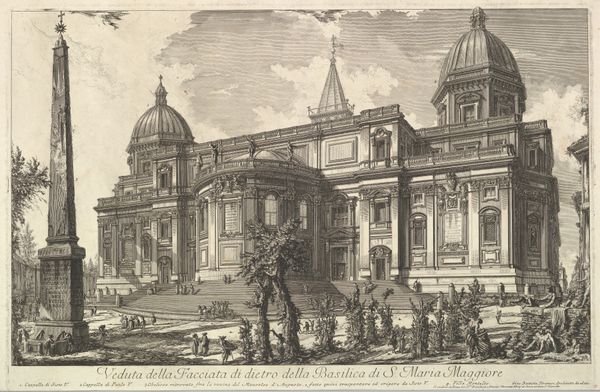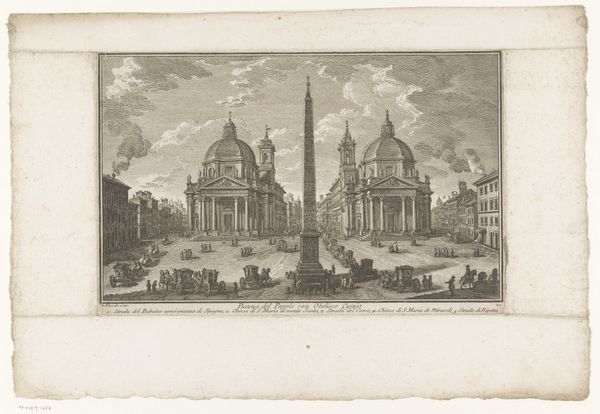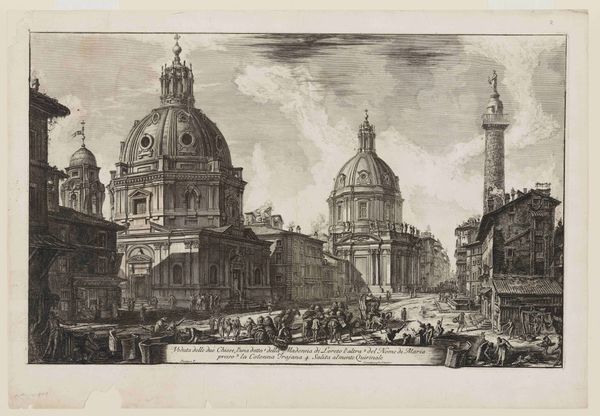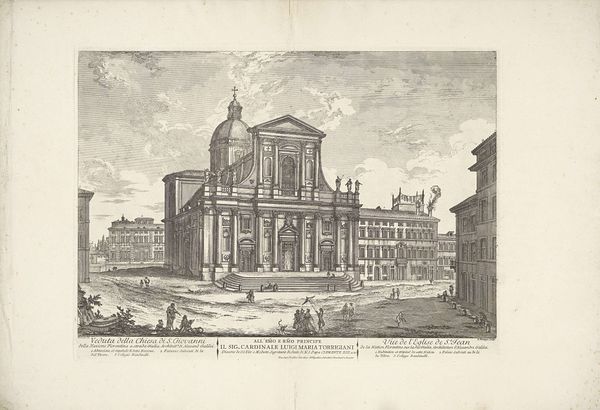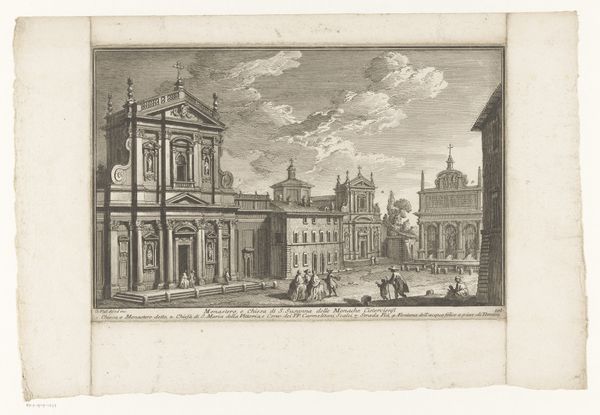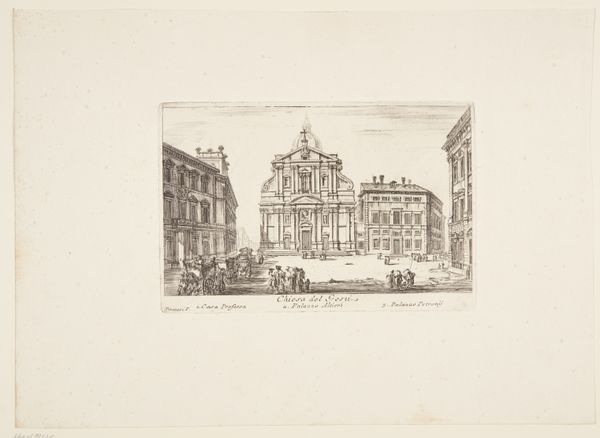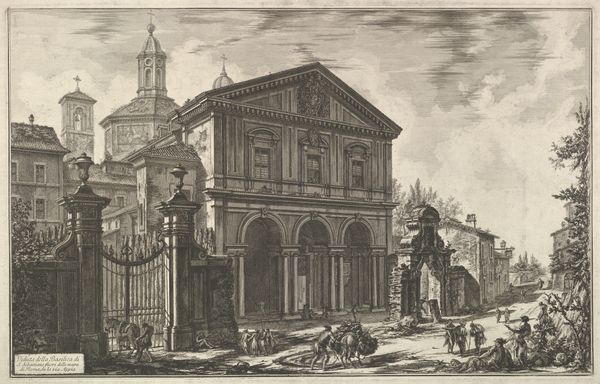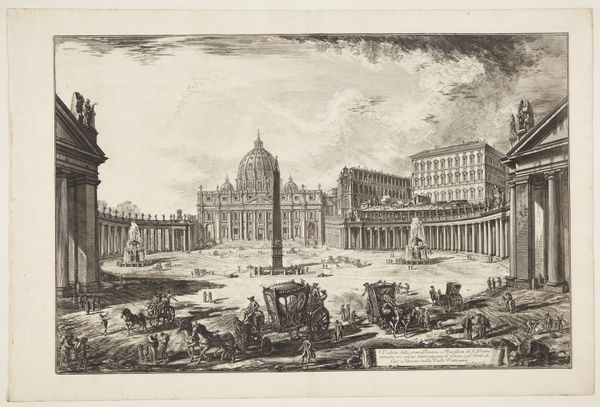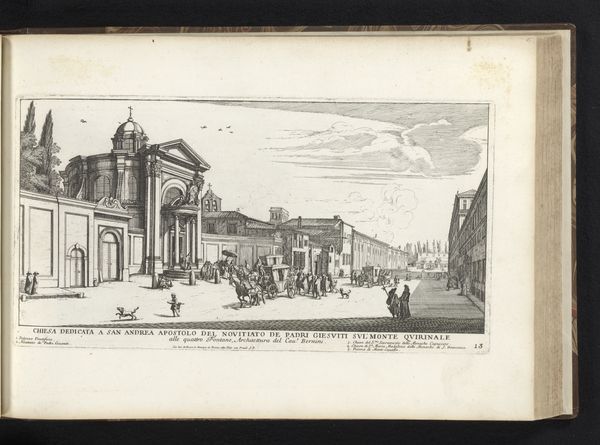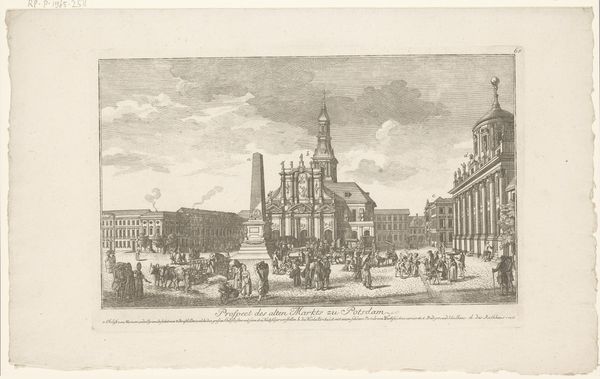
Vedute della Facciata di dietro della Basilica di S. Maria Maggiore Possibly 1749
0:00
0:00
print, etching, architecture
#
baroque
# print
#
etching
#
landscape
#
romanesque
#
cityscape
#
architecture
Dimensions: 16 x 24 1/4 in. (40.64 x 61.6 cm) (plate)
Copyright: Public Domain
Curator: Here we have Giovanni Battista Piranesi's "Vedute della Facciata di dietro della Basilica di S. Maria Maggiore," likely from 1749. It’s an etching capturing the Basilica's rear facade. What are your initial impressions? Editor: Austere, in a way. The basilica feels monumental but also slightly divorced from its surroundings, despite the figures populating the scene. There's a contrast between the man-made structure and the less refined, organic feel of the foliage. Curator: Indeed. Piranesi’s technique in the etching is quite remarkable. Notice the precise articulation of the architectural details, creating a deep sense of space and volume, conforming beautifully to Baroque principles of design and dramatic presentation. Editor: Precisely, I am interested in the labor involved in crafting such an intricate cityscape. The layers upon layers of etching would necessitate meticulous craft to create this illusion of depth and perspective, transforming base metal into a piece suggestive of luxury. How was Piranesi supported? Did the patrons appreciate this emphasis on labor? Curator: The emphasis of labor reminds us of something key about his process and about the work in general: He's also manipulating our perception through dramatic contrasts of light and shadow—the "chiaroscuro" lends a palpable sense of drama that seems very conscious. Editor: Absolutely. That visual drama works to underscore, for me, the overwhelming labor and physical power of creating such structures, ones intended to symbolize earthly and unearthly power simultaneously. These buildings became possible with labor, with materiality. Curator: I agree, this element gives the piece such richness, allowing the structure's visual power to become quite moving. But the manipulation of light itself almost overshadows the architecture, doesn't it? The very process seems to me, and Piranesi seemed to recognize, the value in itself. Editor: I think both things work together quite wonderfully here. By showing off his artistic labor, Piranesi elevated both his art and the value of craft as a material force in shaping culture, wouldn’t you agree? Curator: In essence, yes. He’s masterfully orchestrated light and line, guiding our gaze across planes and depths. Editor: Indeed, by exploring the intersections of labor, technique, and material reality, this print not only depicts a basilica but embodies its very essence. Curator: I find I agree entirely with you on that note.
Comments
No comments
Be the first to comment and join the conversation on the ultimate creative platform.
